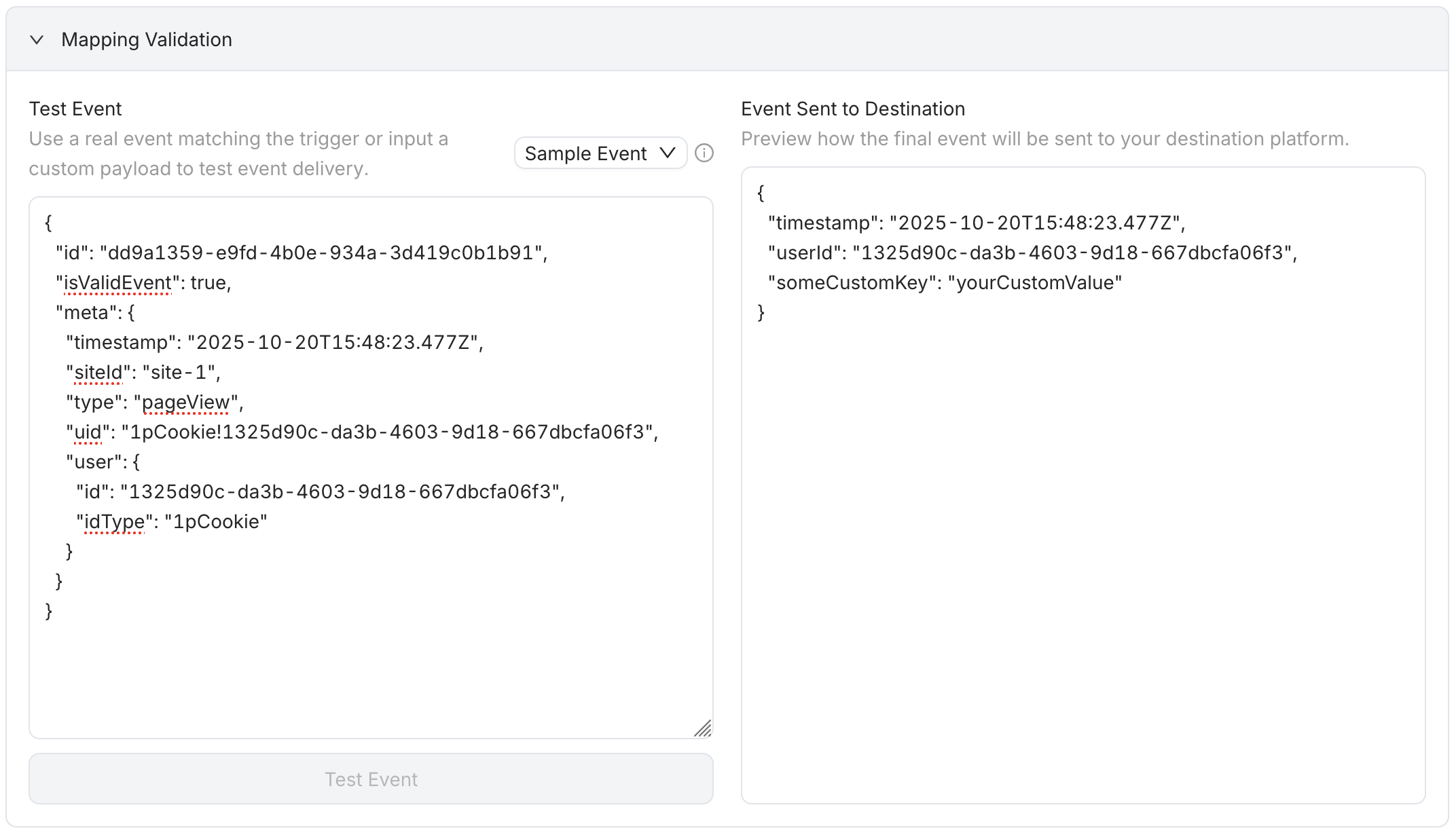Generic Events
The Generic Event destination enables users to forward filtered and transformed events collected by Kevel Audience to any external webhook endpoint. This gives customers the flexibility to integrate with third-party services or internal systems that aren’t natively supported — all from a single, centralized platform. By managing event delivery through Kevel Audience, customers can reduce operational complexity, maintain consistency across destinations, and move faster without custom integrations.
It requires defining the http method, headers, endpoint and a list of mappings. A mapping is a filter-transformation pair, where the filter is a rule with the same semantics as the ones defined in Segment Rules, and the transformation is a Templated Body using the Liquid templating language that defines how the final event, as stored in the system, should be transformed before being sent to the third party.
Template Fields
In this destination, the endpoint, the headers and the body to deliver are templated fields, which means you can use the Liquid templating language to interpolate values from the event being processed. All event fields are under the event object. For example, if you are processing a productView event, you could access the product identifier via {{ meta.data.product.id }}.
Delivery Strategy
Events are sent to the specified endpoint. If delivery fails due to temporary issues such as network errors or server unavailability, the system automatically retries delivery with increasing delay between attempts. If a resonable number of retry attempts are exhausted without success, an activation error is emitted and delivery is abandoned for that event.
Usage Example
Say one wants to forward all events of type pageView to an external platform, sending the user identifier and the event timestamp. For targeting all events of type pageView, one can use a filter such as meta["type"] == "pageView".

Then, provide the template body according to the desired output format.

You may find it useful to test the correctness of the filter and the mapping using the mapping validation preview.
